2008 RACE TEST:KTM 125SX VS KTM 144SX
125
144
Thankfully, AMA amateur racing has taken steps, albeit long overdue, to save the two-stroke. Starting immediately, two-strokes up to 250cc will be legal in the same class as 250cc four-strokes (additionally, 285cc two-strokes can race in the 450 class). Unfortunately, AMA Pro Racing is still sitting on its hands when it comes to two-strokes.
This isn’t simply a matter of which type of machinery is more competitive; four-strokes are only competitive because they were given an enormous displacement advantage back in 1998. The idea of leveling the playing field between 250cc four-strokes and 125cc two-strokes is essential to providing more options to local racers, less expensive entry into the sport, and more variety in the fields.
KTM is the first and only manufacturer to take advantage of AMA amateur racing’s corrective measures. Although introduced as a 2007 model, the KTM 144SX was not produced in significant numbers last season. This year, it will be.
In what is a unique shootout, the MXA wrecking crew spent two months with a 2008 KTM 125SX and a matching 2008 KTM 144SX, trying to choose a winner.
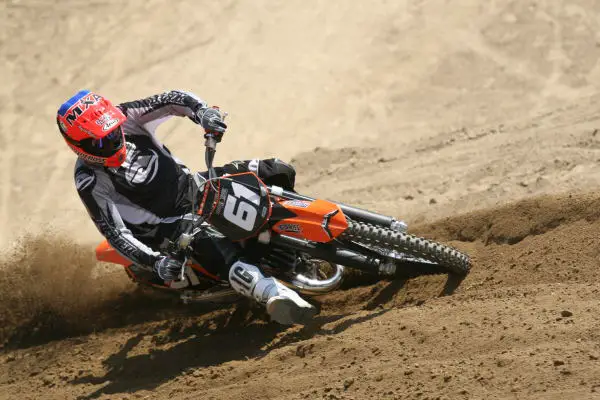
Q:WHAT ARE THE DIFFERENCES BETWEEN THE KTM 125SX AND KTM 144SX?
A:There are four significant differences between the 125SX and 144SX.
Bore and stroke: The KTM 125SX has a 54mm by 54.5mm bore and stroke. The 144SX is bored out 2mm and stroked 4mm (56mm x 58.5mm). The 144SX has a new piston, rings, cylinder and crank.
Exhaust pipe: Visually, the only way the MXA wrecking crew could tell the 125SX from the 144SX in the pits was by looking at the exhaust pipe. The 144 and 125 share the same basic pipe, but the 144SX has a 1-1/2 inch extension added to the head pipe.
Gearing: The 125SX has a 13-tooth countershaft sprocket, while the 144SX uses a taller 14-tooth countershaft (both have 50-tooth rear sprockets). What does that mean? The taller countershaft sprocket is the equivalent of running a 47- or 46-tooth rear sprocket. The 144SX’s taller gearing is designed to take advantage of its extra power and torque.
Jetting: Both bikes run the same 39mm Keihin PWK carburetor, but the mainjet and needle are much richer on the 144SX.
Q:HOW DO THE TWIN KTM’S RUN?
A:As you might expect, the fraternal KTM twins don’t have much in common when it comes to powerbands.
125SX powerband: Thanks to a new piston, keystone rings, reduced volume at the reed cage and a new ignition curve, the 2008 125SX is considerably faster than the 2007 model (which was no slouch). The powerband is extremely linear. There are no aggressive bursts of power or hard hits. Instead, the 2008 KTM 125SX pulls and pulls and pulls. Most test riders compared it to a “road race” engine, in that it was smooth from 5000 rpm all the way to peak at 11,500 rpm. Last year’s 125SX engine revved a little higher to peak (11,700 rpm), but was about one horse less than the 2008 model at every stage in the powerband until that minor edge after 11,500 rpm.
144SX powerband: Where the 125SX has a smooth, linear and road racy powerband, the 2008 KTM 144SX powerband is much chunkier off the bottom and through the middle. Torque is up two foot-pounds from 6000 rpm to 10,000 rpm (and one foot-pound until sign-off). A more telling comparison is between the torque of the 125SX (17.8 ft-lb), 144SX (18.9 ft-lb) and 250SXF four-stroke (19.2 ft-lb). The 144SX closes the torque gap, which is what four-strokes use to get hooked up better than two-strokes. The 144SX’s additional torque is more important on the track than its horsepower figures.
That said, the horsepower numbers favor the 144SX over the 125SX (and over the 250SXF also). The 2008 KTM 144SX tops 40 horsepower at peak (which is about 300 rpm lower and two horsepower more than the 125SX’s peak). Best of all, the 144SX makes as much as three horsepower more than the 125SX in the meat of the powerband.
Q:WHICH ONE IS FASTER, THE 125SX OR 144SX?
A:Need you ask? In back-to-back races, where test riders switched bikes between motos, every test rider loved the 144SX. Given their choice of which bike to race, they unanimously chose the 144SX.
The extra torque and horsepower of the 144SX can be used instantly, without waiting for the rpm to build. Surprisingly, even though the peak is only 300 rpm less than the 125SX’s peak, every test rider thought it signed off much sooner?which was more a matter of the 144SX giving up from a higher point on the horsepower curve, which made the almost identical sign-off curve seem more noticeable.
Q:DID WE HAVE ANY PROBLEMS WITH EITHER BIKE?
A:Yes, the MXA wrecking crew struggled with a few peccadilloes.
Gearing: We didn’t like the stock 13/50 gear ratio on the 125SX, but were happy with the 14/50 on the 144SX. Change the 125SX rear sprocket to a 51.
Crankshaft: We blew the lower end of the 144SX crank at the half hour-mark. KTM took our crank back to the factory for inspection and vowed to find out why our crank was too tight. We swapped engines and had no troubles with mill number two.
Suspension: Although KTM plans to up the spring rates on every other 2008 model, they have left the relatively soft springs on both the 125SX and 144SX. We can accept this because the market for 125 two-strokes (even bored-and-stroked ones) has turned almost exclusively to minicycle transplants. If you are an adult, Vet, Intermediate or Pro, you will have to go up on the springs (we went stiffer).
Q:WHAT WAS OUR BEST FORK SETTING?
A:For hard-core racing, we recommend this fork setup:
Spring rate: 0.44 kg/mm (0.42 stock)
Oil height: 360cc (370cc stock)
Compression: 15 clicks out (14 stock)
Rebound: 24 clicks out (21 stock)
Fork leg height: 5mm up
Notes: For 2008, KTM reduced the stiction on the fork seals for smoother action, while redesigning the hydraulic bottoming cones for a less abrupt deceleration at the end of the stroke.
Q:WHAT WAS OUR BEST SHOCK SETTING?
A:For hard-core racing, we recommend this shock setup:
Spring rate: 6.3 kg/mm (6.0 stock)
Race sag: 105mm
High-compression: One turn out
Low-compression: 20 clicks (14 stock)
Rebound: 25 clicks (23 stock)
Notes: For a rider using the stock spring rate, we would still run the same basic clicker settings. We have our best luck by turning the rebound out. This year’s shock has an aluminum body and more progressive damping to lessen bottoming.
Q:WHAT ABOUT THE KTM 125SX/144SX JETTING?
A:The KTM 125SX and 144SX do not share the same jetting. Here are MXA’s recommended jetting specs (the 144SX jetting is in parentheses).
Main Jet: 188 (202)
Pilot Jet: 45 (45)
Needle: 1469D (1471H)
Clip: Second from top (third)
Air screw: 1-1/2 turns out (1-1/2)
Note: The 125SX exhibited significant bogging when whacking the throttle on. We eliminated this by dropping the needle one clip and leaning out the air screw.
Q:WHAT DID WE HATE?
A:The hate list:
(1) Gas cap: We used to hate the gas cap because it leaked. Now we hate it because you have to push a button before it will turn. At a mud race, this button can get clogged up.
(2) Side panels: What do the Austrians have against numbers?
(3) Sprocket bolts: Don’t lose the supplied tool kit. Why not? You will need the Torx wrench to tighten the rear sprocket bolts.
(4) Black parts: Black is in (as witnessed by both KTM’s and Kawasaki’s Black Bart look). We wish that black was out, because black rims look like salt-and-pepper after a few tire changes.
Q:WHAT DID WE LIKE?
A:The like list:
(1) Front fender: Kudos to KTM. It took them about a decade, but they finally fixed their front fender. Not only does it no longer hit the front tire, but its dimensions are appealing. Was that so hard?
(2) Steel frame: In a world dominated by aluminum, we like the idea of steel.
(4) Handlebars: KTM replaced last year’s proprietary handlebar bend with a more standard-issue Renthal 996 bend.
(5) Triple clamps: KTM’s CNC-machined triple clamps have four-way adjustable bar mounts and adjustable offset (20mm or 18mm).
(6) Brakes: Awesome front brake. This 260mm front brake is the
puckerpower champion.
(7) Weight: Both the 125SX and 144SX come in at under 200 pounds. You can feel how light they are on the track.
Q:WHAT DO WE REALLY THINK?
A:We don’t really have to tell you who won the shootout between the 125SX and 144SX. The proof of victory lies in the fact that KTM will make twice as many 144SXs in 2008 as they will 125SX’s. That’s a good thing, because the 144SX is the choice of every MXA test rider.


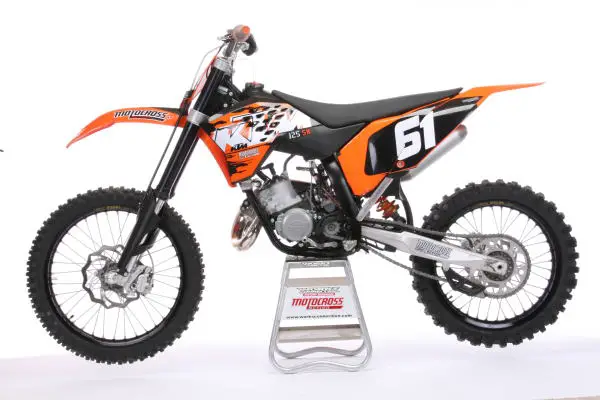

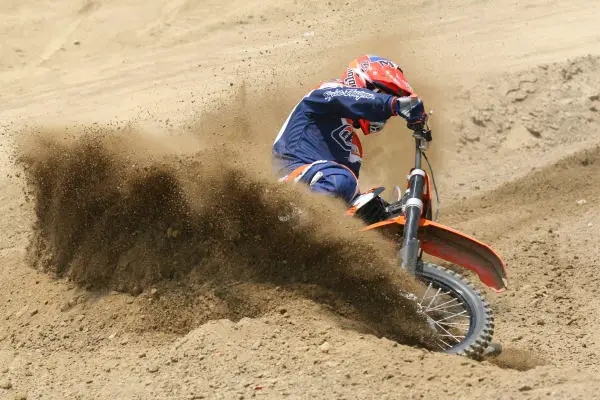
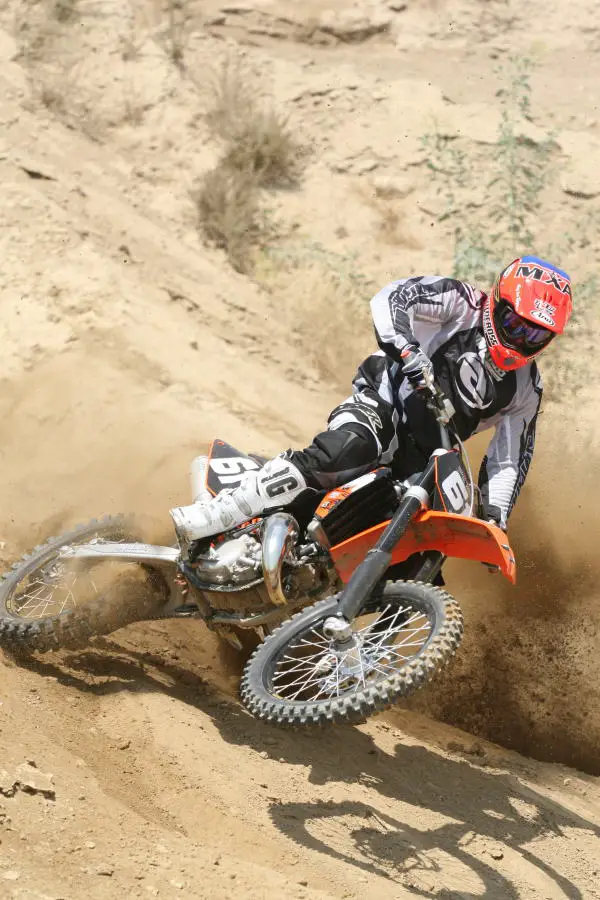
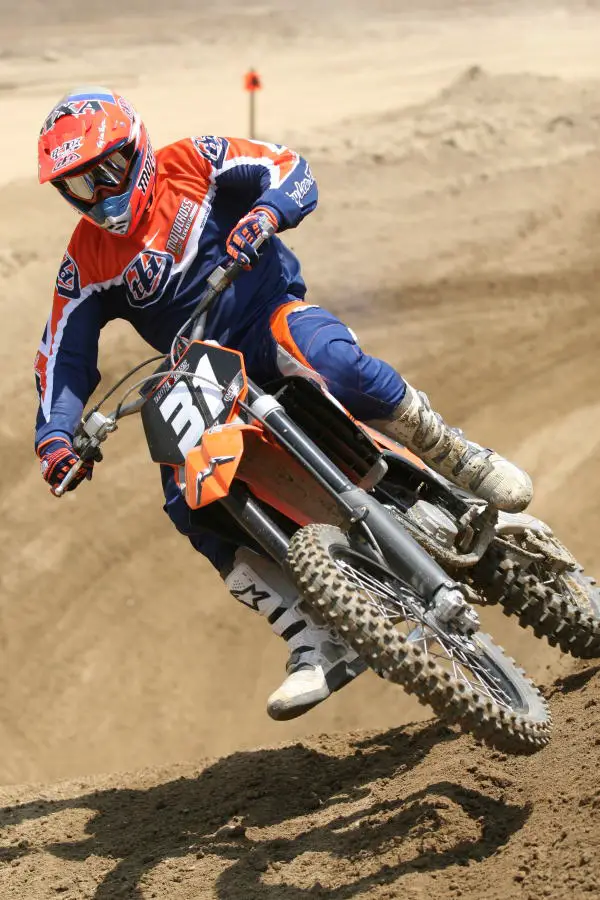

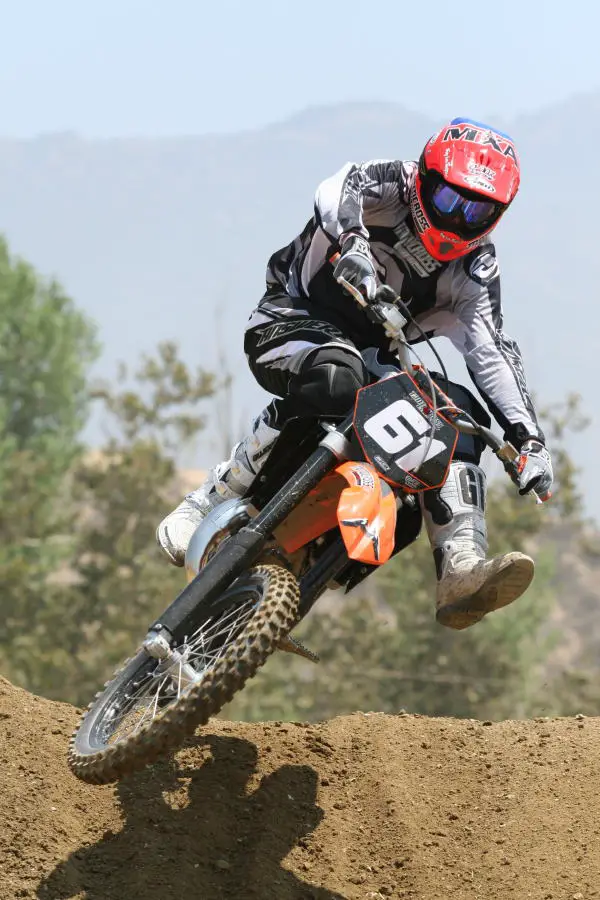
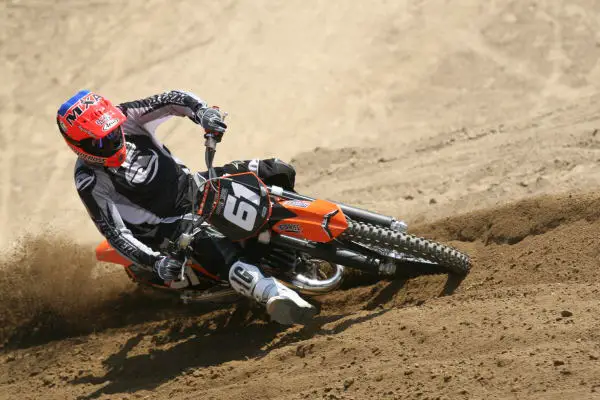


Comments are closed.